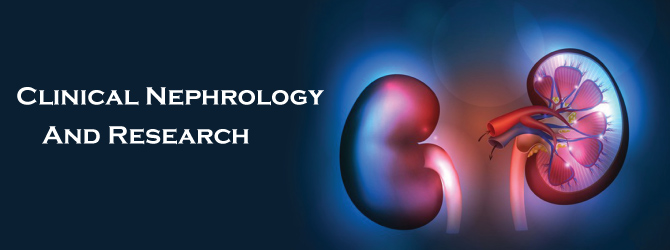
Sign up for email alert when new content gets added: Sign up
Fatima Ezzahra El oumari*, Naima Mammate, Andriy Grafov, Dalila Bousta, Tarik Sqalli Houssaini
University Sidi Mohammed Ben Abdellah, Morocco University of Helsinki, Finland Morocco Laboratory of Biotechnology, Environment, Agri-Food, and Health (LBEAS), Morocco
Posters & Accepted Abstracts: Clin Nephrol Res
Argania Spinosa (L.) press cake possesses a wide range of biological activities, as well as a powerful therapeutic and preventive effect against chronic diseases. The goal of this study is to valorize the anti-crystallization properties against calcium oxalate crystals of Argania Spinosa (L.) press cake fractions as well as identifying its bioactive components. Chemical species identification was done using GC-MS analysis. The turbidimetric model was used to investigate crystallization inhibition in vitro. Fourier Transform Infrared Spectroscopy was used to characterize the synthesized crystals. Furthermore, both DPPH and FRAP methods were used to assess antioxidant activity. The results show that the fractions are equally important in the inhibition percentages of calcium oxalate crystallization. For the saponin and polyphenol fractions, the inhibition percentages are in the order of 83.49 % and 82.83% respectively. The results of the antioxidant activity by DPPH method show that the two fractions are equally important in the elimination of free radicals; the inhibition percentages were 77.87±4.21 and 89.92±1.39 for both polyphenols and saponins, respectively. FRAP method showed that the absorbance increases correlatively as a function of the concentration and the values are almost similar for both fractions and reaches maximum values in the order of 0.52±0.07 and 0.42±0.03 respectively for saponins and polyphenols. These findings demonstrate that both fractions are rich in bioactive chemicals and have an anti-crystallization capacity, allowing them to be employed in the treatment and/or prevention of stone formation. Recent Publications 1. El oumari, F.E.; Bousta, D.; Grafov, A.; Sqalli Houssaini, T. Phytomolecules Investigated for the Prevention and Treatment of Urinary Stones. Mediterr. J. Chem. 2021, 11, 126. 2. MOHIM, Mohamed & El Oumari, Fatima & Kachkoul, Rabie & Elhabbani, R & Allata, Y & Chouhani, B & Bardai, G. & Kabbali, Nadia & Souilmi, Fatima-zohra & Houssaini, Tarik & Mohamed@usmba, Mohim & Ma,. (2021). Crystalluria in lithiasis disease. 3. El oumari, F.E.; Bousta, D.; Imtara, H.; Lahrichi, A.; Elhabbani, R.; El mouhri, G.; Al kamaly, O.; Saleh, A.; Parvez, M.K.;Grafov, A.; et al. Chemical Composition and Anti-Urolithiatic Activity of Extracts from Argania spinosa (L.) Skeels Press-Cake and Acacia senegal (L.) Willd. Molecules 2022, 27, 3973 Room R, BaborT, Rehm J (2005) Alcohol and public health. Lancet 365: 519-530.